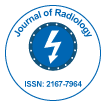Radiation Dose Reduction in Computed Tomography: Strategies and Technologies
Received Date: Jun 03, 2024 / Published Date: Jun 28, 2024
Abstract
Computed Tomography (CT) is a critical imaging modality that provides detailed anatomical and diagnostic information. However, concerns about radiation exposure and its potential health risks have underscored the need for effective radiation dose reduction strategies in CT imaging. This review explores various strategies and technologies aimed at minimizing radiation dose while maintaining diagnostic image quality. We examine advancements in CT technology, including iterative reconstruction techniques, automatic exposure control, and advanced detector technologies, which contribute to dose reduction. The review also discusses practical approaches such as optimized scanning protocols, patient-specific dose adjustments, and the implementation of dose-reduction guidelines. Additionally, the role of emerging technologies, including machine learning and artificial intelligence, in enhancing dose management and image quality is highlighted. By integrating these strategies and technologies, the field of CT imaging can achieve a balance between minimizing radiation exposure and ensuring high-quality diagnostic outcomes. This comprehensive overview aims to provide insights into current best practices and future directions for radiation dose reduction in computed tomography.
Citation: Magon F (2024) Radiation Dose Reduction in Computed Tomography:Strategies and Technologies. OMICS J Radiol 13: 579.
Copyright: © 2024 Magon F. This is an open-access article distributed under theterms of the Creative Commons Attribution License, which permits unrestricteduse, distribution, and reproduction in any medium, provided the original author andsource are credited.
Share This Article
Open Access Journals
Article Usage
- Total views: 490
- [From(publication date): 0-2024 - Mar 29, 2025]
- Breakdown by view type
- HTML page views: 315
- PDF downloads: 175
